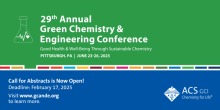Green Chemistry
Systematic Study on the Design of Supramolecular Deep Eutectic Solvents (SUPRADES) for the Extraction of Bioactive Compounds
his research focuses on the design and optimization of supramolecular deep eutectic solvents (SUPRADES) for the extraction of bioactive compounds and the exploration of potential applications. SUPRADES represent a novel subclass of deep eutectic solvents (DES) that could have a significant impact on green chemistry due to their enhanced inclusion properties, offering a promising alternative to conventional solvents. They may provide higher selectivity and efficiency in extracting different families of compounds.
Improvement of Cell-Liposome Interaction for Photodynamic Therapy
Photodynamic therapy (PDT) is a therapeutic alternative for treating several pathologies, from microbial infections to cancer. PDT involves applying a photosensitizer (PS) that interacts with light in an appropriate wavelength, absorbing its energy and going from the basal to the excited singlet state. This excited state can experience intersystem crossing to the excited triplet state (3PS*). 3PS* can generate reactive oxygen species that induce injury and trigger cell death.
The CO2 Tree: The Potential for Carbon Dioxide Utilization Pathways (Poster)
Among the most active areas of chemistry research today is that of carbon dioxide utilization: an area of research that was viewed as futile and commercially impractical not so long ago due to the energetic stability of the CO2 molecule. The breakthroughs that largely began in earnest in the 1990s have accelerated and now make up a diverse and plentiful portfolio of technological and scientific advances and commercialized technologies.
2025 GC&E Abstract Submissions are Now Open!
Urea-Hydrogen Peroxide-Mediated C(sp2 )-H Bond Selenylation of Imidazoheteroarenes and Simple Activated Arenes
In recent decades there has been uprising interest in the medicinal properties of organoselenides. These ubiquitous structural have their wide applications in material sciences, in catalysis and modern organic transformations. Research studies have led to important discoveries regarding selective C–Se bond formation and in this context a notable approach is direct selenylation. In this regard, nitrogen- or oxygen-containing arenes with organoselenides have appeared as a very important class of molecules, with diverse applications in the biological sciences.
Surface Engineered Nanomaterials: Synthesis, Stabilization, and Applications
Application-specific nanomaterials with longer lifetime can be developed with the aid of interdisciplinary sciences. For that, exploring different synthetic methods and conditions is necessary. Moreover, designing the surface ligands with required functionalities is considered the key for stabilization and solubility as well as target binding and different applications. Modification of surface ligands at surface of metal NPs and quantum dots (QDs) opens the door of numerous opportunities in terms of applications.
Developing Renewable Bioplastics from Bio-Derived Monomers
Enhancing the efficiency of material processing, utilization, and recycling is pivotal for advancing sustainability in modern society. The objective of this study is to create sustainable methods for converting non-food biomass into recyclable polymers. One key compound, 4,4'-biphenyldicarboxylic acid (BPDA), is used as an additive in copolymer production and as a blending agent to improve the properties of polyester. BPDA was synthesized through the oxidation of 4,4'-dimethylbiphenyl (DMBP), a compound that can be efficiently derived from biomass-sourced 2-methylfuran.
Light-Catalyzed Synthesis of Carbohydrate Polymers for In Situ Cell Surface Engineering
Glycans are a class of carbohydrate oligomers that densely coat many cell surface proteins and lipids, acting as the first point of contact between a cell and its microenvironment. A network of over 700 glycan-processing enzymes, 10 monosaccharides, and architectural complexity give rise to diverse glycan structures with specific biological functions. Cell-surface proteins can act as receptors for glycans, initiating binding events which influence myriad biological processes within the cell.
Green Photoredox Catalysis Using Near-Infrared Light: Two-Photon-Absorption Enabled Cyclization
Over the past two decades, there has been a significant surge of interest in the field of ultraviolet and/or visible (UV/vis) light photocatalysis. UV-vis irradiation merged with noble metal-based photosensitizers of Ru, Ir as catalysts is most useful combination in this segment as these metal photocatalysts mostly absorb in the UV/vis region. However, high energy UV/vis irradiation sources as well as the noble-metal based photosensitizer are not considered as green.
Pagination
- Previous page
- Page 6
- Next page

